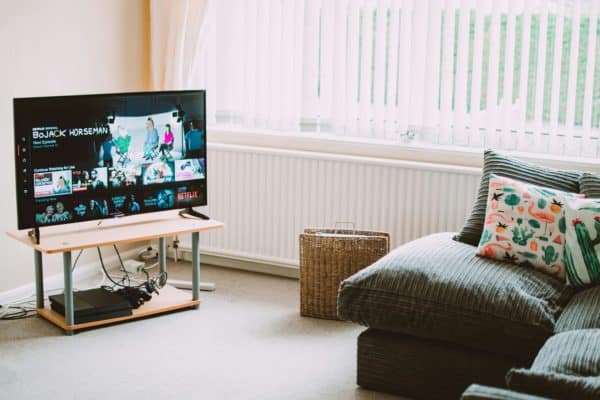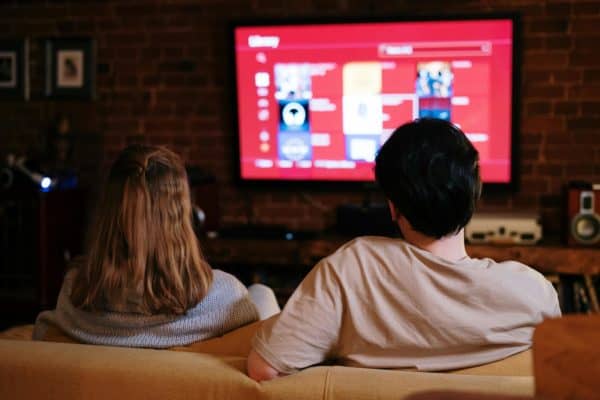Why TV Dimensions Matter

TV dimensions play a significant role in determining the overall visual impact of your television. A larger screen size can provide a more immersive experience, making you feel like you’re part of the action. On the other hand, a smaller screen may be more suitable for compact spaces or personal use. The screen size of a TV refers to the diagonal measurement of the display. In the case of a 60-inch TV, this measurement is 60 inches from one corner to the opposite corner. However, it’s important to note that the screen size alone does not provide a complete understanding of the TV’s dimensions.
How Big is a 60-Inch TV?
Understanding the dimensions of a 60-inch TV on paper is one thing, but visualizing its actual size can be quite helpful. In this section, we will help you grasp the scale of a 60-inch TV by comparing it to common household items, discuss space requirements for installation, and consider the ideal viewing distance for an immersive experience.Installing a 60-inch TV requires careful consideration of the available space to ensure an optimal viewing experience.
Here Are Some Space Requirements To Keep In Mind:
Wall-Mounted: If you plan to mount your 60-inch TV on the wall, you’ll need to ensure that the wall is sturdy enough to support the weight of the TV. Additionally, consider the viewing angle and height of the TV to achieve comfortable viewing from various seating positions.
TV Stand or Entertainment Center: If you prefer a TV stand or entertainment center, ensure that it is wide enough to accommodate the 52.3-inch width of the TV. Measure the space where you plan to place the stand to ensure a proper fit.
Clearance Space: Allow for sufficient clearance space around the TV to prevent overheating and ensure proper ventilation. Check the manufacturer’s recommendations for the specific TV model regarding the required clearance distances.

Viewing Distance
The ideal viewing distance for a 60-inch TV depends on various factors, including personal preference and the screen resolution. As a general guideline, a viewing distance of around 7 to 12 feet is recommended for a 60-inch TV. This distance allows for comfortable viewing without straining your eyes or losing detail.It’s worth noting that modern TVs often come with higher resolutions, such as 4K or even 8K. These higher resolutions allow for closer viewing distances without compromising picture quality.
How Big Is A 60 inch TV in cm, inches, and mm?
| Inches | 52.3 | 29.4 | 60 |
| Centimeters | 132.8 | 74.7 | 152.4 |
| Millimeters | 1328 | 747 | 1524 |
Measured in centimeters, a 60-inch TV spans near 152 cm in diagonal length and is typically around 133 cm in width. This substantial size provides a large space for the display of your favorite movies, TV shows, and even video games. It’s not as big as an 80-inch TV of course, but it’s on the bigger side, and it can be felt as soon as you see it live. A perfect size for the whole family.
Average TV dimensions in inches by brand and size
| 50-inch without stand | 50-inch with stand | 55-inch without stand | 55-inch with stand | 65-inch without stand | 65-inch with stand | 75-inch without stand | 75-inch with stand | |
| Samsung | 43.9×25.4×1.9 | 43.9×28.1×9.3 | 48.4x 27.8×1.4 | 48.4x 30.5×9.7 | 57×32.7×1.4 | 57×35.4×11.3 | 65.8×37.7×1.4 | 65.8×40.5×8.3 |
| LG | 44.1×25.7×2.6 | 44.1×28.2×10 | 48.6×28.2×2.3 | 48.6×30.8×10.3 | 57.3×33.1×2.3 | 57.3×35.8×11.9 | 65.8×37.9×1.6 | 65.8×40.4×14.1 |
| Vizio | 43.9x 5.6×3.1 | 43.9x 27.6×10 | 48.6×28.1×2.9 | 48.6×30.7×10.8 | 57.1×32.9×2.6 | 57.1×35.4×1.9 | 66x38x3 | 66×40.2×13.8 |
| TCL | 44×25.5×3.1 | 44×27.5×11.5 | 48.5×28.2×3 | 48.5×30.5×12.4 | 57×32.8×3 | 57×35.3×12.6 | 65.9×28.9×3.6 | 65.9×40.8×16 |
Things To Keep In Mond Before Buying a TV
- Measure the space available in your room where you want the set up to be done : By this we mean, measure the height, depth, and width of your space . Also keep in mind the purpose, whether you want to place it in your dining area, living area or your bedroom. If it’s for entertainment purposes on a daily basis, or want to give it a special movie night thing .
- Compare the brands available in the market before investing: Compare the price, quality and exciting things they are offering with the TV setup.
- TV contrast Ratio: It is the most important aspect of picture quality which has been poorly understood and ignored. It is nothing but the difference between the brightest a TV can be, and the darkest. TVs with the best contrast look best to casual viewers and usually get the best reviews. And beyond the capabilities of the TV, room lighting, screen reflectance, picture settings and the content itself all affect the actual contrast ratio you see on screen.
Minimum Screen Size for Distance to Couch
| Distance To Couch | Minimum Screen Size |
| 4 feet | 32 inches |
| 5 feet | 42 inches |
| 6 feet | 50 inches |
| 7 feet | 55 inches |
| 8 feet | 65 inches |

What Are The Benefits of Larger TV Screens?
- Immersive Viewing Experience: A larger screen provides a more immersive viewing experience, especially for movies, sports events, and gaming. It fills more of your field of vision, making you feel like you’re part of the action.
- Better Detail and Clarity: With a larger screen, you can see more detail in the content you’re watching. This is particularly noticeable with high-definition and 4K content, where the extra screen real estate allows you to appreciate finer details.
- Enhanced Social Viewing: Larger screens make it easier for groups of people to watch together comfortably. Whether you’re hosting a movie night with friends or watching the big game with family, a larger screen ensures everyone gets a good view.
- Improved Gaming Experience: Gamers can benefit greatly from a larger screen, as it provides a more immersive gaming experience and allows for better visibility of in-game details. Many modern TVs also come with features like low input lag and high refresh rates, which are especially beneficial for gaming.
- Enhanced Home Theater Experience: If you have a dedicated home theater room or setup, a larger screen can truly transform the space into a cinematic experience. Pairing a large screen with quality sound systems can create a movie theater-like atmosphere in the comfort of your own home.
- Future-proofing: As content continues to be produced in higher resolutions and formats like 8K become more common, having a larger screen ensures you’ll be able to fully appreciate these advancements without feeling like you’re missing out on detail.
- Multi-tasking: A larger screen can also be useful for multitasking, such as having multiple windows open side by side or using picture-in-picture features to watch TV while browsing the internet or working on other tasks.
Conclusion
In conclusion, opting for a larger TV screen offers a multitude of benefits that enhance your entertainment experience. From providing immersive viewing and gaming experiences to accommodating social gatherings and future-proofing your setup for upcoming content formats, the advantages are clear. Whether you’re a movie buff, avid gamer, or simply enjoy relaxing with your favorite shows, a larger TV screen can elevate your home entertainment to new heights, making every viewing session more enjoyable and engaging.
 Gearfuse Technology, Science, Culture & More
Gearfuse Technology, Science, Culture & More


